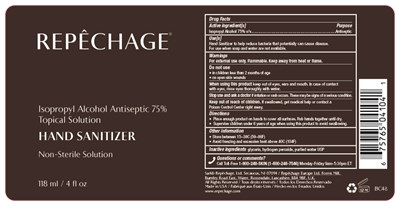Product Images Isopropyl Alcohol Antiseptic 75% Topical Solution Hand Sanitizer Non-sterile Solution
View Photos of Packaging, Labels & Appearance
Product Label Images
The following 3 images provide visual information about the product associated with Isopropyl Alcohol Antiseptic 75% Topical Solution Hand Sanitizer Non-sterile Solution NDC 64521-1234 by Sarkli-repechage, Ltd., such as packaging, labeling, and the appearance of the drug itself. This resource could be helpful for medical professionals, pharmacists, and patients seeking to verify medication information and ensure they have the correct product.
HandSanitizerIsopropylAlcohol16oz

This is a drug facts label for a 75% isopropyl alcohol antiseptic topical solution. It is a non-sterile solution. The solution should not be used on children under two months of age, on open wounds or in eyes, ears, or mouth. People should stop using it if there is a skin irritation or rash. The solution should be kept away from the heat sources and children. The active ingredient is Isopropyl Alcohol. It contains proplyene glycol and purified water USP, among inactive ingredients. It has been manufactured in the USA.*
59 mL Label - HandSanitizerIsopropylAlcohol2oz

This is a product description of a hand sanitizer solution from Repechage. It contains Isopropyl Alcohol and is a non-sterile solution. The size of the container is 59ml or 2floz. The text also includes characters that are not legible.*
118 mL Label - HandSanitizerIsopropylAlcohol4oz

This is a description of a hand sanitizer solution. The solution has 75% isopropyl alcohol and is used as a topical antiseptic. The solution is non-sterile and comes in a 4oz bottle. Some instructions are given for use, such as keeping the solution out of reach of children. The text also includes some additional information about the product and safety measures.*
* The product label images have been analyzed using a combination of traditional computing and machine learning techniques. It should be noted that the descriptions provided may not be entirely accurate as they are experimental in nature. Use the information in this page at your own discretion and risk.